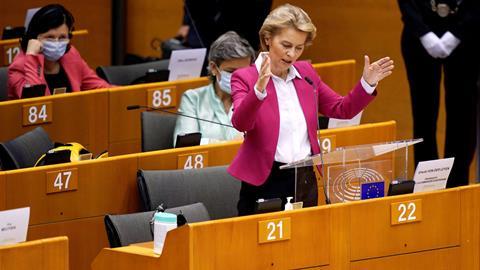Murray Birt says there is no better place for a green economic recovery than starting to renovate the 210 million buildings in the EU.

WRITES MURRAY BIRT
'A remarkable consensus has emerged about the need for an environmentally and socially responsible economic recovery from Covid-19.
The European Commission has announced its planned €1.29 trn economic stimulus package, aiming for 25% to be spent on climate related investments. But What are the implications for real estate investors? And what advice have financial institutions been providing regarding green stimulus?
As PropertyEU readers know, how we use buildings is changing. A new DWS article “Real estate and ESG in a post-covid world” concluded that designing healthy buildings, sensors and new technologies and enhanced landlord-tenant cooperation are important to the future of buildings.
As governments look for economic stimulus, they are realising the high job creation potential from retrofits to green buildings and improve living and working environments. A recent survey of hundreds of central bank and finance department officials found that retrofitting buildings was one of the best ways to create green economic stimulus. A review of 35 retrofit programs found 19 jobs created/€1 mln investment, higher than a similar investment in fossil fuel industries.
The Commission’s estimates are that retrofitting buildings is the largest area requiring investment for Europe’s green and digital transformation. Pre-pandemic, an estimated €73 bn a year was invested in energy-related renovations of non-residential buildings and €145 bn a year for other non-residential renovations. But few renovations are “deep” in terms of energy and carbon savings. An estimated 6.5 mln jobs in Europe depend on renovating buildings, with 30% of these jobs for non-residential renovations.
Meeting climate goals will require a tripling of building renovation rates, as buildings create 40% of carbon emissions. This could create 2-4 mln jobs with more jobs created by product manufacturers. Commission President Ursula von der Leyen said that the Green Deal is Europe’s growth strategy and a top priority is a ‘Renovation Wave’ strategy due for publication in September.
We expect that the rate and depth of renovating buildings will increase due to asset owner expectations, regulations and stimulus measures.
Anticipating asset owner expectations, DWS and twenty four major real estate investors committed to net zero property portfolios by 2050. DWS set a 2030 goal to cut emissions from our European office buildings by 50% below 2017 levels. Targets for other property types are being developed.
In mid-2019, a group of major pension funds asked the Institutional Investors Group on Climate Change (IIGCC) to develop guidance for what it means to be aligned with the Paris Climate Agreement’s goals, across Strategic Asset Allocation, equities, corporate and sovereign bonds and real estate. IIGCC is a European association of asset owners and managers with €30 trn AUM. DWS was asked to co-chair the property group with the UK’s Brunel Pension Partnership. Guidance documents will published in the coming months for consultation.
A key tool for guiding property investors will be the EU and investor funded Carbon Risk Real Estate Monitor (CRREM) project which has developed a model for downscaling climate science to decarbonisation pathways for different building types in major countries . CRREM is being integrated into the GRESB real estate sustainability assessment.
Regarding policies, in 2014 the Commission and UN Environment Finance Initiative formed the Energy Efficiency Financial Institutions Group (EEFIG). DWS was a founding member. EEFIG helped elevate the importance of energy efficiency in European policy, informed legislative reforms and key market building initiatives.
Recently, DWS played a lead role providing EEFIG Steering Committee advice to the EU. As well, DWS’s new report “Green, healthy buildings as economic stimulus” provides detailed recommendations which we hope will become part of the ‘Renovation Wave’ strategy.
For instance, we recommend that building performance standards be created and that standards should be guided by the CRREM decarbonisation pathways. As well, landlord/tenant incentives should be aligned by requiring tenants to share smart meter data with building owners while respecting data privacy. A few governments (Austria, Finland, Germany and Sweden) need to join their peers in allowing building service charges to be used to share retrofit costs with tenants.
The EU’s green stimulus proposal will be negotiated with Member States and the EU Parliament, aiming for agreement by the end of the year. The details for how stimulus funding will be spent has not yet been published, but will likely focus on combining grants, guarantees and loans.
There is no better place for a green economic recovery than starting to renovate the 210 million buildings in the EU and the real estate community has a key role to play.'
Murray Birt
|










